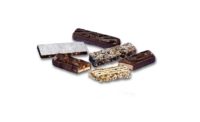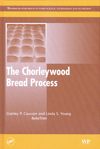Less is More
![]()
Less is More
More and more candy manufacturers are rewarding health-conscious
consumers with smaller bites of heaven.
The evidence of
consumer health awareness and education is sprinkled all over the candy
department. Treats are low-carb and no-sugar, have cleaner ingredient
statements with purer contents, there are organic offerings, and smaller
sizes for single-serving portion control. It is this latter option that
many feel has the most staying power, and perhaps the greatest long-term
profit potential for retailers.
“Reduced size is an excellent idea on several counts,” says
Joan Steuer, president of Chocolate Marketing in Beverly Hills, Calif. “One,
portion-controlled candy ironically often means greater sales — as health-conscious
consumers perceive the candy item as a ‘controlled indulgence’ and may even
purchase smaller sizes more often as a perceived guilt-free treat.”
Retailers can also benefit from the fact that reduced sizes
often cost more — and their customers expect that. “Consumers have already learned
from other categories, ranging from dry goods to foods, that smaller sizes are
more expensive, and thus, already educated, are not surprised to see this with
candy,” Steuer adds. “The retailer can benefit from higher margins on these
smaller sizes of candy.”
Manufacturers have responded to the “tiny” trend. Kraft Foods
has just announced its 100-calorie Nabisco Packs — portion-controlled snacks
all with zero grams of trans fat. On the specialty candy front, Grammy Lammy
Handmade Candies, Portland, Maine, has recently unveiled Millie’s Delights,
a new bite-size product.
“People are enjoying bite-size snacks more and more,” says Linda
Lambridges, owner. “We add just as much quality to these smaller treats, and
they will satisfy a sweet tooth as much as our well known larger chocolates.
We are listening to our customers and trying to give them another product they
love.”
Guylian USA Inc., a leading manufacturer of premium
boxed Belgian chocolates based in Englewood Cliffs, N.J., has also
responded to the “exploding self-purchase trend” with what it
calls “impulse packs” of individually wrapped chocolates
— its new Seahorse Twists, Solitaire dark chocolates and Praline
Hearts. According to Leslie Coopersmith, president, these types of candies
are a growing category because they serve two strategic purposes.
“On one hand, they’re perfect candy-dish items, but they also
suit people who simply want high-end chocolates in smaller portions than a traditional
candy bar,” she says.
Coopersmith believes that Guylian and other manufacturers who
respond to the latter trend will even pick up additional customers. “Every year,
consumers are becoming more educated in terms of what is healthy to put into
their bodies,” she states. “But it has always proven true in the confectionery
area that there’s always a need and want by consumers for a little treat. By
putting our candies into smaller packages, we expect to get a lot more trial
from people who won’t feel guilty about consuming the product because it’s a
portion-controlled piece.”
Price-wise, Guylian expects that its impulse candies have combined
the best of both worlds. As a premium candy in individually wrapped pieces,
it does offer retailers higher margins. However, the new stand-up bags are actually
less costly than its traditional gift boxes, and therefore, comparatively speaking,
“the cost per piece is very reasonable,” says Coopersmith.
Looking for a reprint of this article?
From high-res PDFs to custom plaques, order your copy today!








